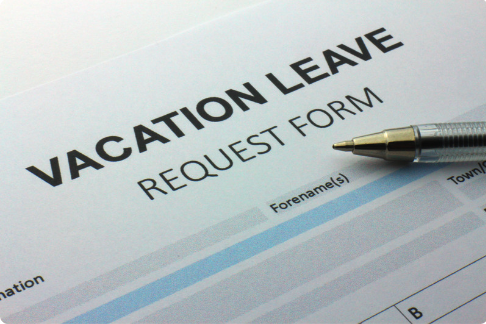Your Quick Guide to Giving Employees Leave
America is behind the curve in terms of work/life balance. It took a global pandemic for us to realize you can have successful, meaningful careers and a fulfilling life. One does not necessarily need to be sacrificed. We have witnessed historic unemployment rates, businesses struggling to find employees, and retention rates plummeting. The workforce demands flexibility in their employment to allow more time outside the office.
While most states mandate sick leave for employers, most of them are quiet regarding vacation leave – only requiring employers to adhere to their own policy. While providing employees leave might seem like a loss in output, it can be a mutual benefit for everyone involved.
Vacation Time / Personal Time Off
I have looked at organizations offering their staff limited and unlimited vacation time. And you may be surprised that people with unlimited vacation take less time off per year than those with a set number of days. And because of this, I have seen executive-level staff encouraging their workers to take more time off because they are not using this benefit. If supervisors didn’t ask this of their team, I can only imagine the burnout the employees get to feel and experience.
Some employees still find it difficult to take time off from work even when they have accrued leave (the dollar equivalent of vacation earned by an employee of which the company assumes liability, and in some states considered compensation/wages earned). We have reviewed audits that show many employees capped at their annual max. This leaves us to wonder a few things:
- Is leave actually encouraged in the workplace?
- What is the messaging from supervisors when an employee requests leave? Is it treated like a burden to other shift employees? Is it the end of life as we know it?
We can go down multiple rabbit holes talking about all the scenarios and solutions if the answer to these questions is a huge yes. The bottom line is, how can the company make a healthy shift so their employees can stay healthy?
Every day, there comes the point when our cognitive function is limited and production decreases. We watch TV, read something we enjoy, or take a walk to settle the day. Similarly, a leave allows a person to free up their cognitive bandwidth, reduce stress induced by the work, and come back rested and intentional in their work.
Recruitment and Retention
Here’s something more costly than giving time off – recruitment. The amount of overhead spent in advertising positions, reviewing resumes, interviewing (multiple times), and hiring can stack up quickly.
People are looking for market wages and better benefits. In addition to health benefits (which not all employers are required to provide), candidates are drawn to the amount of time off they can take per year.
Aside from employer contributions which are generally similar across the country, leave benefits can be a reason why a candidate works for you or your competitor. This can also be true for retention. Other benefits might be financially difficult for small employers to match with larger companies in their industry, but most people who work for small companies understand those limitations and enjoy working with a smaller group. Providing competitive leave benefits keeps your current talent and increases output to grow your business.
It’s Healthier
Good leaders care about their employees. After all, one person can’t wear all hats in a growing organization if they’re looking for stability, growth, and scale. Allowing employees to schedule and take paid leave is a great way to keep everyone healthy and can organize their personal lives. The saying “leave your personal life at the door” is not easy for single parents, employees going through life-changing events (marriage, divorce, birth/death of a child), or someone struggling with mental health issues.
Our personal and work lives sometimes intertwine and more often affect each other. Employees who step away are far more likely to consistently show up as scheduled, less likely to get sick, and more productive, creative, and connected to their company.
Takeaway
Do you have a policy on leave? Is your company violating sick leave rules? Are your employees taking the appropriate number of holidays? What are your payout rules if you offer vacation leave?
Leave benefits are not impossible, unrealistic, or a loss of productivity. It’s an employer’s way of saying, “my people matter.”
Whether you give competitively, are exceptionally generous, or are lost in what you should offer, we need to dive deeper into your organization to make the right decision for the long game. Let Think Global HR help you make better decisions about your employees. Book a call now!



